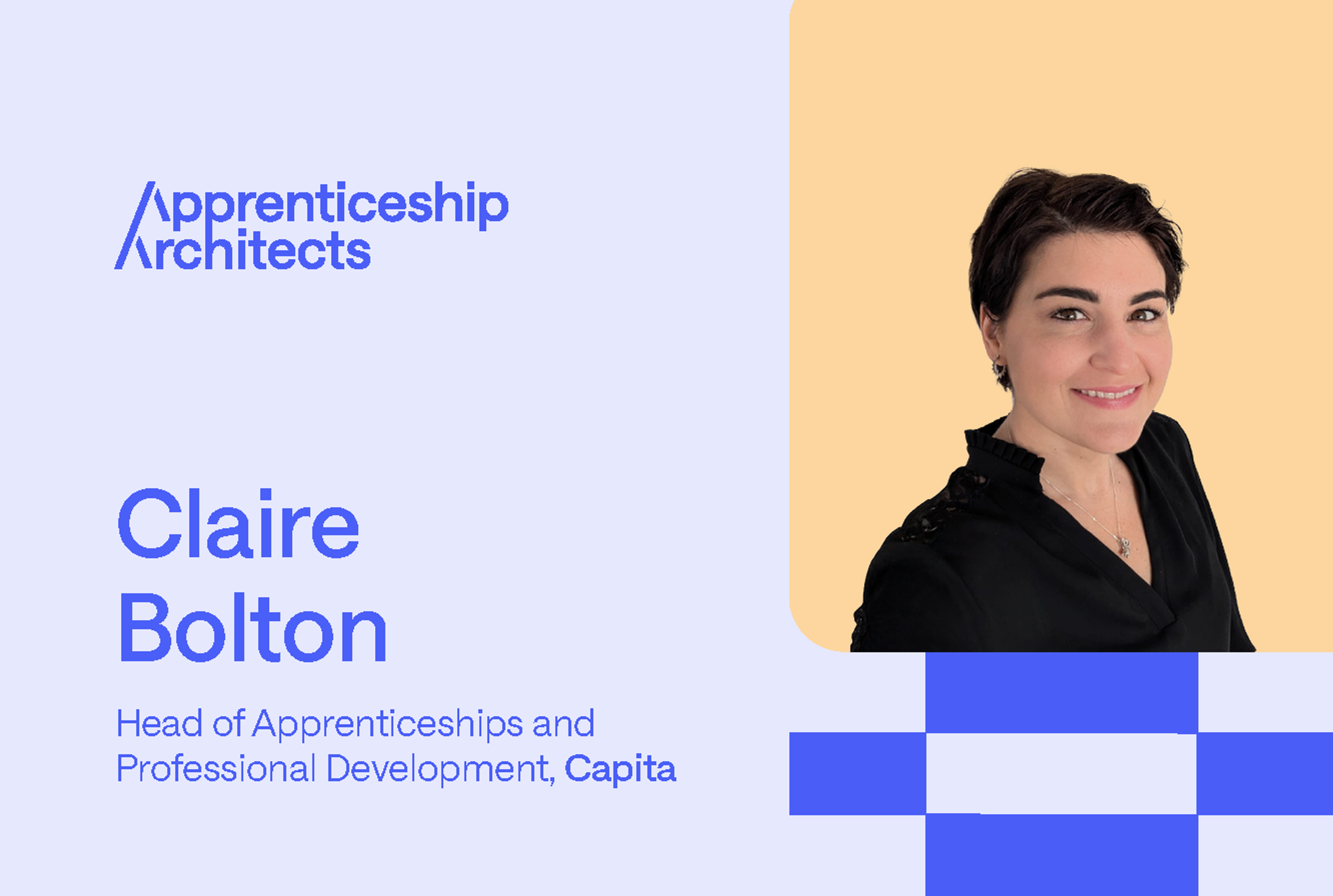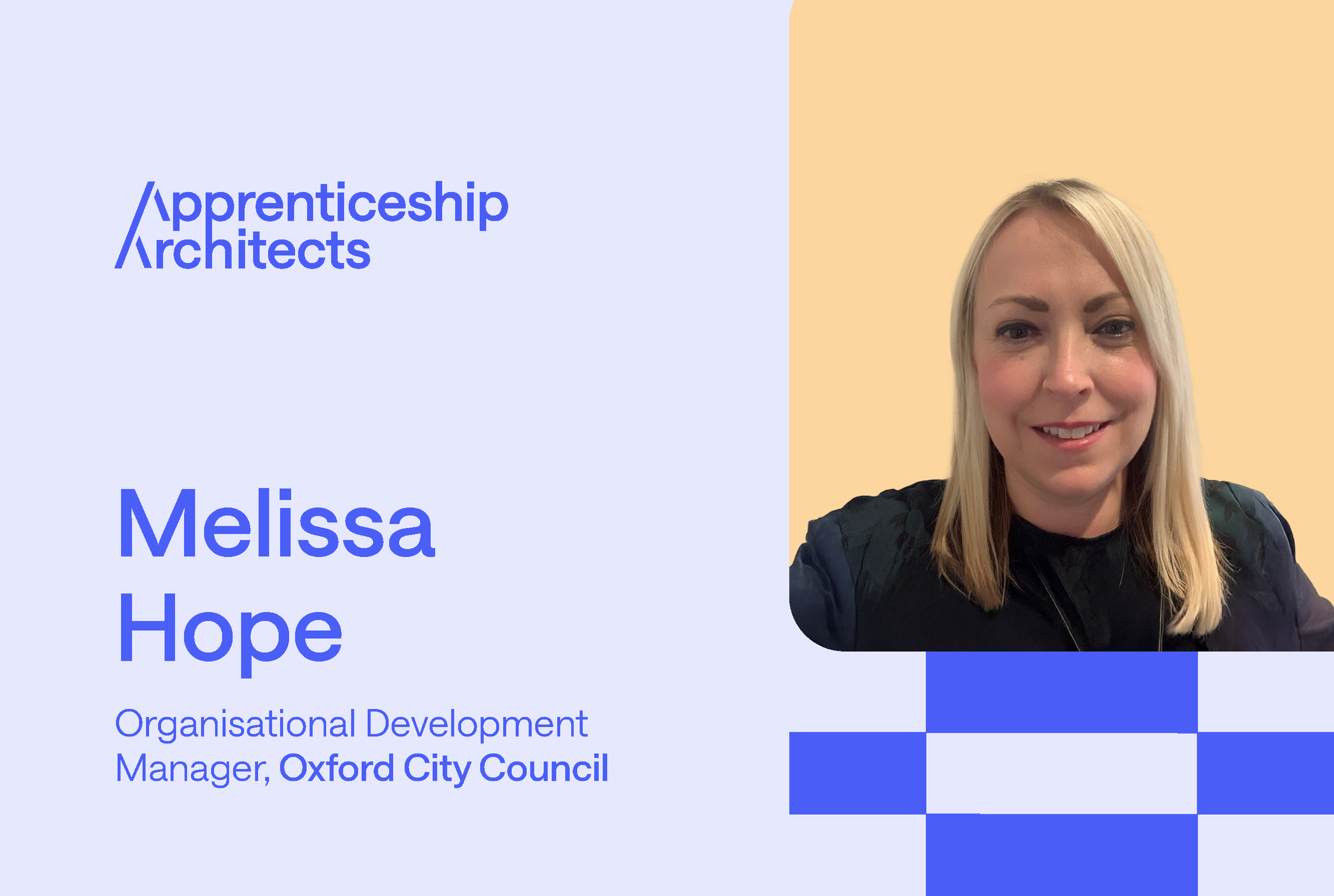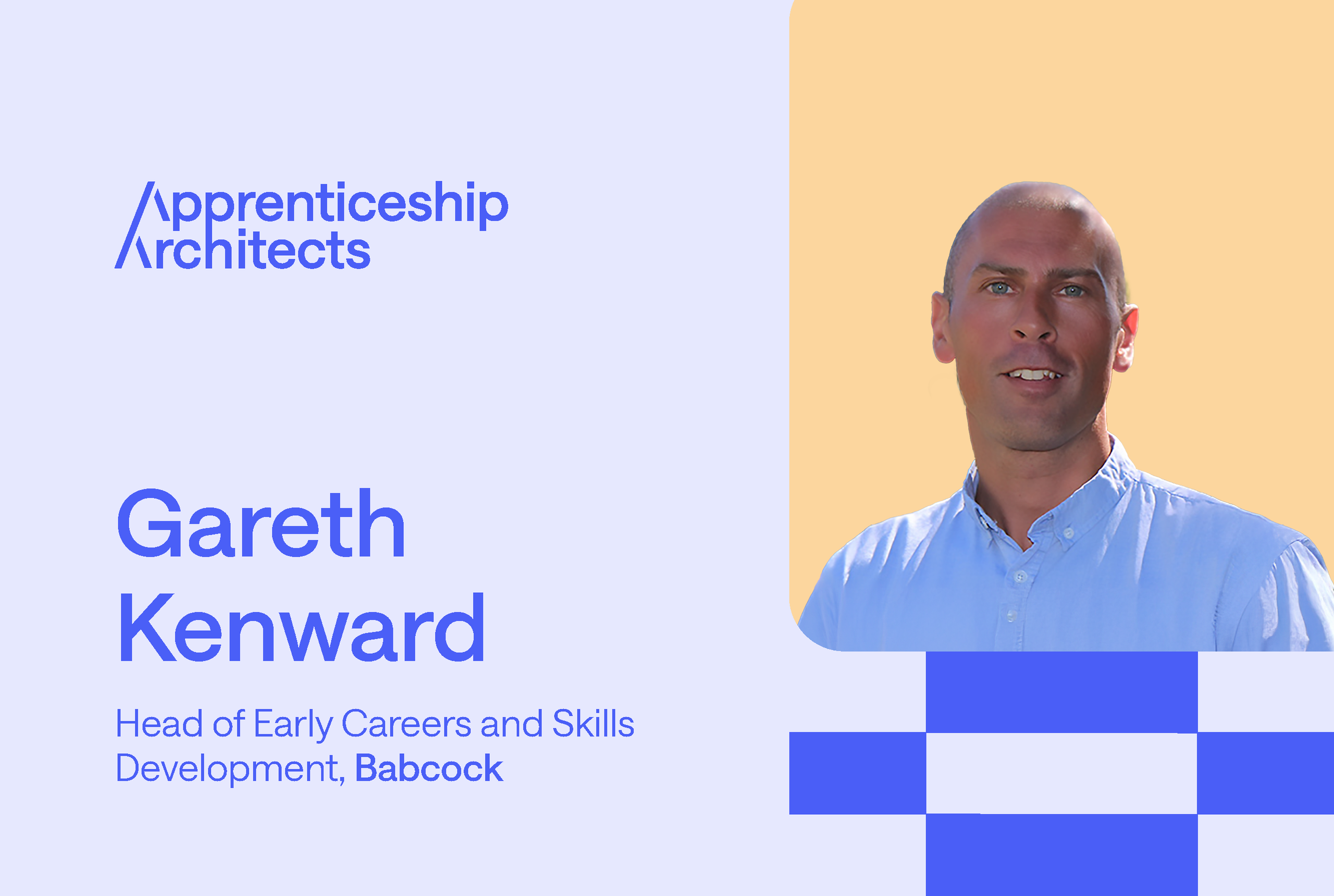In our Apprenticeship Architects series, we chat with HR leaders to tap into their expert knowledge on getting the most from apprenticeship programmes.
We spoke to Claire Bolton from Capita, about the steps for launching a new upskilling programme and how to align apprenticeships with AI adoption.
Welcome to Apprenticeship Architects, Claire. Can you tell us about your role and the apprenticeship programme you launched with Multiverse?
I'm Claire Bolton, Head of Apprenticeships and Professional Development at Capita. I work with Multiverse and other providers to promote apprenticeship programmes for Capita across the business.
I ensure programmes are of good quality and are fit for purpose, for the individuals and the organisation. I work with senior leaders at Capita to align the apprenticeships with Capita’s strategy. I’ve been working with Multiverse for some time on the AI for Business Value apprenticeship.
You’re now on your fourth intake of employees to the apprenticeship programme. Can you walk us through how it’s evolved?
At first, it was a big bang – we had so much interest across the business. It's evolved quite significantly over the four cohorts.
Initially, we started with a ‘transformation accelerator’ group. We held in-depth stakeholder interviews to understand:
- Where they sit in the business and what they’re involved in
- Who they work with and who works for them
- How could this programme add value to them?
- What are the problem statements this programme could potentially support?
We gave that information to the coaches working on the programme.
This is how you know, while building this knowledge, you're going to make a difference. And then we can use the projects they're working on, like a full cycle, and feed it back to those senior leaders.
What’s the biggest impact you’ve seen from the Multiverse apprenticeship programme?
The biggest thing is confidence. The [AI for Business Value] apprenticeship gives everybody the opportunity to start at the same level and build confidence.
For those in client-facing roles, they can go into a client meeting, take that new knowledge, and share the journey they've been on. That will be hugely powerful in our organisation to ensure our clients have confidence in us as their trusted advisor.
Can you explain the steps you took so learners knew what to expect?
In any apprenticeship at Capita, we're keen to make sure we have the right people, on the right programme, at the right time. No one wants to start a course and then drop out.
With Multiverse, we built out a comprehensive insight session. Following the first two cohorts, we took it one step further and it grew into a taster session.
It transformed from a factual session about the course, goals, and eligibility criteria into a preview of what sessions are like and how they're delivered. That way, learners get an idea of whether it would work for them. Having that exposure before they've committed has been really successful.
How do learners on AI for Business Value actually implement their new projects
We're very lucky to have Tiina Stevens, Director of Digital at Capita, who leads our AI engagement internally. She's been really involved in the programme, hosting sessions for apprentices to provide insight into her role, highlighting how they can have an impact on the business and its direction.
Tiina has introduced our AI Catalyst Lab, [which houses] all of the identified opportunities where AI could be applied as part of a solution. Apprentices have full access to align their projects to this Lab and have the opportunity to work with Tiina and her team to see it to fruition, which is really exciting.
How are you sharing success with the rest of the business?
Seeing the projects - and the impact individuals are creating - brings it to life.
This isn't just sitting in a classroom and learning the theory. They genuinely are changing the way our organisation is performing, developing and serving our clients and their customers, because they understand AI and how it can benefit them.
We share [learner] outputs in a variety of ways. We might do a session with a senior leader who previously identified the challenge. It might be that we'll have an internal community where we'll post various case studies of the projects. It varies, but it's important to complete that circle and show the successes of individuals and the impact on the business.
In National Apprenticeship Week, we had a panel session which we live-streamed across the organisation. We had six learners on the programme at the time who were able to speak about their experience.
That was incredible. Not only did it touch so many different people, it managed to get a huge audience watching virtually. It spotlighted the individuals as well as the programme overall.
We've talked about lots of positives, were there any challenges, and how did we overcome them?
One that sticks out for me – which was probably a good challenge – is we had to be careful about who we put on the programme. There was so much excitement and so much appetite. Understandably, everyone wanted to go on it. So we had to be strategic and selective as to who we could invite to join.
We did that by ensuring we had really good relationships with senior stakeholders who understood the needs of their divisions. They could work with us to identify who’s top of the list that needs to go on this immediately, who can afford to wait until the next cohort, and so on.
Without that strategic partnership with the wider business, the leaders, and their knowledge, we wouldn't have that clarity.
What’s your top advice for HR teams at the start of this journey?
I've got two. One would be to not underestimate the power of real stories. We've four cohorts in, and our first isn't far off graduating. We've got tangible impact statements, reports, projects and outcomes that we can share with our business and with our clients. It's real, it's not theory. The more we can promote those, the better.
My second bit of advice is to work with the business, layer by layer. The real success has been understanding each area of our business and how this can help individual teams, before tailoring the nominations and the offering.
We've spoken lots about the wider impact, do you have any individual success stories you want to share?
Many learners [have created] significant impact since being on the programme, but one in particular stands out from our first cohort. They had no exposure to AI and joined full of enthusiasm and excitement, like everyone does.
There was a moment when she wasn't sure if she was going to stay on the programme. And she'll tell you that she's delighted she did, because she turned that corner, and started to see the change in her thinking and doors opening internally. She's doing some brilliant work in leading AI change in her area of the business.
It’s a lovely, good news story, about achieving something that you might not have thought you could and going through all of the challenges to get there, but actually seeing the benefits afterwards.
What's your long-term vision for the AI for Business Value programme at Capita?
I’d love to create a sense of communal learning in Capita. AI is changing all the time, and it's important our colleagues are continuously developing their learning in this space.
So even once they've completed the programme, it would be lovely to create a space for them to share their learning regularly. That might be a regular spotlight ‘lunch and learn’ where we invite apprentices to share the projects they're working on.
That would be a way to spread the knowledge, excitement, and confidence across the business as well as keep momentum. We can't stand still, because we'll get left behind.
Learn more about Multiverse apprenticeship programmes
Explore how others are powering AI adoption and closing the data skills gap with upskilling.





